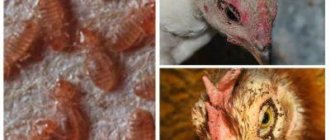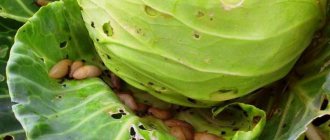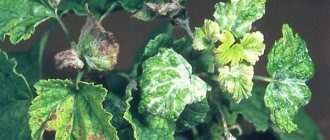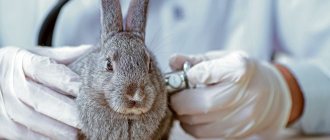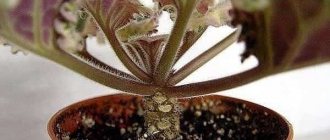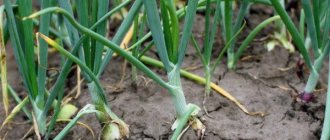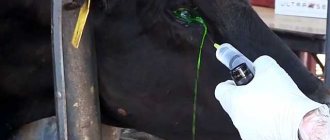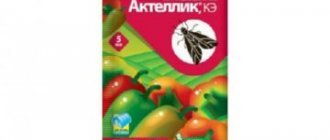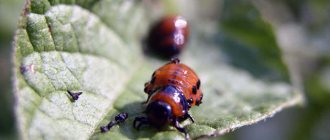If your poultry is constantly itching and forcefully plucking its feathers, it may have parasites - feather eaters. These are tiny insects that are invisible to the human eye, but cause great discomfort and harm to the bird - they can lead to a decrease in its egg production, loss of body weight and even death. We will find out further how to detect these parasites and remove them.
What kind of parasites are these?
The periodontal beetle, also known as the "chicken louse" or "chicken mite", is a small parasite that can be recognized by the following characteristics:
- body dimensions do not exceed 2-3 mm;
- the head is triangular in shape and protrudes above the body;
- the oral organs are presented in the form of a gnawing apparatus;
- body shape is flat and slightly elongated;
- the hard shell that covers the body is light brown with a hint of yellow;
- the body is divided into several segments, between which stripes of a dark shade can be seen;
- wings are missing.
Such parasitic organisms settle on the body of birds and live in their feather cover, holding on to it with the help of a jaw and three pairs of paws. Because of them, chickens become irritable because they feel severe itching. To cope with it, they begin to itch, pull out feathers and peck at each other.
This leads to loss of plumage in chickens, increased irritability and the appearance of small abrasions on the skin, which makes the environment more favorable for the development of parasites. In veterinary medicine, such a disease is called mallophagosis, so pereaters are also known as mallophages (down-eaters).
It should be noted that, unlike blood-sucking parasites, such parasites do not feed on the blood of chickens. The diet of pereaters includes:
- fluff;
- feathers;
- particles of dead skin;
- ichor, which is released from places of pecking and scratching of the skin.
The fertility of these parasites is quite high: at a temperature of 25-30°C and a humidity of 70-80%, one female a day can lay up to 10 eggs, attaching them to the feathers or down of chickens. The development cycle from egg to adult takes about 3-4 weeks.
The larvae usually emerge from the eggs 6-18 days after they are laid. Then they go through 3 stages of molting, each of which takes 12-18 days. After this, the parasites become adults, whose lifespan in the external environment is 6 days, and on the host’s body - 30 days.
One chicken is home to up to 10,000 parasites, which can migrate into bird bedding, equipment or flooring. It is believed that one sick chicken can infect the entire chicken coop with mallophagosis within a week. Young animals are most susceptible to the effects of pereaters.
Camomile tea
Another remedy that is very popular. Unlike wormwood, chamomile will not cause discomfort to the bird, and it can be found in almost every yard. However, it should be noted that in the later stages of the development of the disease, chamomile infusion will be of little use, since the parasites will multiply at tremendous speed. In other cases, you can prepare the product using the algorithm described below.
- Take two large bunches of freshly picked grass.
- Pour 10 liters of boiling water over chamomile.
- Let the product sit for 5 hours.
- Thoroughly strain the water from the grass.
The resulting tincture must be used to treat poultry feathers. This is best done using a spray bottle, holding the tool at a distance of 20-30 centimeters from the chicken. The following areas should be subjected to special treatment: wings, tail, neck - this is where most of the parasites are concentrated. The procedure must be carried out at intervals of 2-3 days even after the tick disappears.
Causes of chicken infection
As a rule, chickens develop feather eaters due to their close quarters in the chicken coop or non-compliance with veterinary hygiene standards. Initially, “mites” can settle in dirty equipment or a perch, and only after that - in the plumage of chickens.
Parasites can be carried indoors by the dirt-stained shoes of the worker who cares for the livestock. In addition, visiting the chicken coop area of wild birds - pigeons, sparrows, crows - increases the likelihood of infection with parasites. As carriers of bird eaters, they often fly into poultry feeders and come into contact with them. As a result, the parasites “move in” and infect chickens with mallophagosis.
A healthy bird can pick up “chicken lice” while taking baths with sick birds.
Poultry infection routes
There are several known routes of infection:
- From an already sick chicken while taking a dust bath.
- From wild birds flying into the yard.
- The insect can be brought by the owner himself on his clothes or shoes from another pen where infected chickens lived.
Distribution of the down-eater
Knowing in advance about the specifics of the spread of the feather eater, you can prevent mass disease in chickens. This insect is distinguished by its increased fertility; in less than a month, the female can lay a huge number of eggs.
Beetles choose warm and humid places for breeding. Females place their eggs at the base of the feathers or down; they are difficult to remove due to the dense adhesive base covering the egg.
From the laid eggs a larva emerges, which after three molts becomes a sexually mature individual. To do this, the pest needs to stay on the feathers for no more than three days.
Be sure to read:
Why and when do chickens molt and what to do, how long does molting last for laying hens?
Outside the body, the insect cannot exist for more than 4 days, so the feather eater spends almost the entire time of its existence on the body of the chicken.
Statistically, roosters clean their feathers less, which is why they tend to have more insects. The spread of the lice beetle is facilitated by untimely cleaning of the chicken coop and dampness.
Symptoms of mallophagosis
The following signs indicate the appearance of feather eaters in chickens:
- the feather shafts are damaged at the base;
- there are bare areas on the body due to the fact that the chicken constantly itches and pulls out fluff;
- the bird is in a state of constant neurosis and seems restless;
- young animals lag behind in development and gain weight poorly;
- a liquid is released from the eyes of birds, which, when dried, forms a crust;
- the affected areas gradually lose feathers and become covered with small abrasions.
As a rule, breeders identify a parasitic infection by a “bald back”, but in some cases this sign indicates baldness of the bird due to poor housing and feeding. The fact is that a lack of vitamin D, dry air and cramped conditions or stale air and high humidity lead to the bird shedding its feathers. This also occurs during normal shedding, although not to the same extent as during the disease.
Thus, to accurately determine mallophagosis, one should take into account the presence of not only a “bald back”, but also other symptoms characteristic of this disease.
We recommend that breeders read the article about what other dangerous chicken diseases exist.
Symptoms of chickens affected by feather eaters and lice eaters
Timely identified symptoms of mallophagosis allow you to choose the most effective methods of treating such a disease. The most pronounced among them all is the appearance of extensive bald patches in the chicken’s plumage. But the problem is that such a sign of infection appears only when a large number of mites already live on the bird’s body. As a rule, by this time the parasites have already spread to the entire population.
Changes in the behavior of chickens can help identify mite infestations at an earlier stage. In this case, the following points may indicate the appearance of lice eaters:
- excessive excitement of living creatures - the laying hen constantly moves and behaves too actively;
- a sharp decrease in appetite;
- constant attempts by the chicken to scratch various parts of the body with its beak;
- slower growth rates in young animals;
- weight loss in adults;
- frequent incidence of illness in poultry, which is explained by a weakened immune system;
- decreased egg production in laying hens.
As the disease progresses, symptoms become more pronounced. The following points are also added to the above:
- chickens often pluck their feathers;
- feathers with the shaft eaten away are scattered in different parts of the chicken coop and walking area;
- upon closer examination, combed and pecked areas are found in certain areas of the bird’s body;
- inflammation appears on the skin;
- conjunctivitis develops;
- Bald patches appear on the skin of laying hens and gradually grow.
If any of the indicated symptoms of the disease are detected in a chicken, it is immediately isolated from the rest of the population. But it should be remembered that similar symptoms are also accompanied by some other health problems in chickens. Baldness of certain parts of the bird's body and the appearance of feathers in the chicken coop may be a sign of molting or a deficiency of vitamins and minerals. Weight loss and excessive agitation in animals often indicate an unbalanced diet.
Therefore, immediately after isolation, sick individuals are carefully examined for the presence of parasites. To identify mites in the plumage, use a heater lamp. It is placed over the bird and after a couple of minutes the skin under the feathers is examined in a lighted area. Such insects are attracted by heat, making them easier to detect.
The feathers found should also be carefully examined. During normal molting, they fall out whole. If feather eaters appear, the feather shafts are severely damaged, which can be seen even with the naked eye.
How dangerous are pereaters?
If treatment is not timely, you will have to face the following consequences of mallophagosis:
- a decrease in the productivity of laying hens by more than 10% as a result of weakening of their body;
- slow weight gain in chickens and broilers;
- the onset of sexual maturity of chickens later than expected;
- infection of birds with infectious diseases due to the appearance of open areas on the skin, which become covered with small wounds and become foci of penetration of skin infections;
- death of poultry;
- infection of the entire flock with a parasitic infection (parasites need the constant presence of the host, so they crawl from sick chickens to the feathers of healthy individuals).
For ornamental chickens, the presence of feather eaters is also unpleasant from an aesthetic point of view, since they disrupt the beauty of the plumage and lead to baldness of individual parts of the body. Feathers affected by parasites gradually fade and lose their shine.
Symptoms of having chicken lice
When infected, the bird begins to lose its appetite and becomes anxious. In the initial stages of the disease, when the chicken has not yet begun to lose its plumage, the presence of feather eaters can be determined by the following symptoms:
- Anxiety for no reason;
- Poor appetite;
- The bird itches very intensely and plucks its feathers;
- Inflamed skin (dermatitis);
- Adults lose weight;
- Chickens gain body weight rather slowly;
- Inflamed eyes (conjunctivitis);
- Feathers that fall out of a bird have damage characteristic of a feather eater.
You can read about why chickens go bald in this article.
If characteristic symptoms appear, it is necessary to immediately treat the livestock. If harmful insects are found on one individual, then it is separated from the rest of the herd, because the parasites spread very quickly. If this is not done, after a short period of time all young and adult birds will also be infected.
How to withdraw?
If feather eaters have infected chickens, the breeder needs to perform two tasks - cure the infected individuals and prevent the spread of the parasitic infection. Meanwhile, removing this parasite will require quite a lot of time - on average 3-4 months, and in severe cases even six months. The fact is that after a one-time treatment of chickens, periodontal beetles may appear again, so several treatments will be required to completely destroy them.
The larger the distribution area, the more difficult it is to get rid of “chicken lice,” so you should not delay removing them.
To quickly and effectively destroy bird eaters, veterinarians recommend using a combination of synthetic drugs and folk remedies. If chemicals allow you to destroy lice, then home methods will repel them and serve as an excellent prevention of infection.
Folk remedies
To effectively combat beetles, the use of chemicals alone is not enough. To achieve better results, you should use home remedies along with them. It should be noted that these methods predominate in the treatment of young animals, since insecticides are too toxic for fragile organisms.
So, to cure hens and chicks from mallophagosis, you can use gentle folk remedies. These include:
- Chamomile infusion . To prepare a strong chamomile infusion, you need to pour 4 tbsp. l. dried flowers 1 liter of water and boil for 5 minutes over low heat. The infusion should be cooled, and then used to rub into the feather cover of adult hens and chicks.
- Dry wormwood powder . Powder made from dry branches and leaves of wormwood is also an excellent repellent. To enhance its effect, you can add pyrethrum powder (a type of chamomile) to it.
- Herbs . Beetles do not like the smell of a number of plants - chamomile, juniper, wild rosemary, wormwood, rosemary and tansy. So, in order to scare away parasites and force them to leave their “favorite” room, dried grass should be scattered over the litter, interspersed with straw or hay. In addition, the infusion of these herbs can be sprayed on an infected bird using a spray bottle. It can also be rubbed into chicken feathers.
- Sand-ash baths . To clean a bird's feathers of parasites, it should be bathed in saws. This method is especially effective in small areas of infection. So that chickens can take such baths, it is worth placing special boxes in the chicken coop or aviary (depending on the time of year), which are filled in equal parts with wood ash and clean sand. To enhance the therapeutic effect of this mixture, you can add a powdered insecticide to it.
At the slightest discomfort, chickens will “bathe” in these baths. In this case, the sand-ash mixture will envelop the plumage, which will cause the bird eaters to suffocate, and the down and feather cover of the bird will be cleaned and deprived of excess moisture.
Kerosene has also proven itself to be effective in the fight against chicken lice. It is believed that it has a detrimental effect not only on beetles, but also on their eggs, which compares favorably with chemicals. However, kerosene has an aggressive effect and is therefore contraindicated for chickens. Thus, products based on it are suitable only for adult chickens. Here is one effective recipe:
- Mix kerosene with water and 9% vinegar in a ratio of 1:2:1/4 so as not to burn the sensitive skin of the bird.
- Shake the resulting mixture first, and then use it to treat the feather cover.
Kerosene can also be mixed in equal parts with ammonia and benzene. This solution is suitable for treating not only birds, but the entire chicken coop.
Chemicals
Birds affected by the lice beetle will need to be separated from healthy individuals in order to prevent the development of the epidemic. Next, sick chickens must be treated with special insecticides, which are sold in veterinary pharmacies. These include:
- Frontline;
- Leopard;
- Beafar;
- Unoiled;
- Stronghold;
- Celandine.
These products are intended for removing lice and ticks from domestic animals (cats and dogs), but they are also successfully used in the treatment of mallophagosis in chickens. They should be purchased in the form of sprays for treating chicken feathers. Drops are recommended for isolated cases of infection.
If there are a lot of sick birds, veterinarians recommend using other forms of antiparasitic agents, which should be given special attention:
- Butox . Refers to universal antiparasitic agents. Available in liquid form, diluted with water and used to treat chicken feathers using a spray bottle. The product can also be used to disinfect the chicken coop.
- Insectal . The drug is available in powder form and is intended for application to the chicken’s body. They need to powder the bird, lightly rubbing it into the base of the feathers.
- Arpalit . It is an aerosol that has the safest composition for birds, so it can even be used to treat young animals over 2 months old. Arpalit should be sprayed evenly over the chicken's plumage.
- Nyuda . This is a spray for human lice, but can also be used to kill beetles. The cost of the drug is quite high, but it has low toxicity, so it is excellent for treating rare breeds or a small number of infected birds.
Regardless of the drug chosen, the following rules should be observed when processing poultry:
- Apply drops to the feather cover in the back area. It is advisable not to skip a single area, treating not only the infected areas, but also the entire feather of the bird, so that the parasites do not have the opportunity to crawl onto untreated areas and develop further.
- Apply the spray evenly over the entire feather cover, paying special attention to areas under the wings and bald areas. In this case, it is extremely important to spray the drug from a distance of 15-20 cm from the feathers. To prevent it from getting into the chicken's eyes, the head should be covered with a cloth. In any case, we must remember that insecticides in spray form cannot be used to treat chickens under 3 months of age.
- The drug in powder form must also be rubbed evenly into the feather of the bird, treating both affected and healthy areas.
- As soon as the insecticide is applied to the feathers, the bird's beak should be tied for a while so that it cannot peck itself at the treatment site. Adult parasites and larvae die within a few minutes, depending on the effectiveness of the drug used.
- All individuals should be treated - both sick and healthy. In the future, this will prevent cross-infection and the spread of parasites.
Toxic compounds cause paralysis in adult feather eaters, but have virtually no effect on the egg. In this regard, the treatment should be repeated after 7-10 days to destroy newly hatched parasites. If this is not done, then after 14 days the chicken will again be infected with lice.
Some breeders in the summer recommend carrying out a second treatment 9 days after the first, and in winter - 12 days later. In any case, the interval between treatments must not be neglected, otherwise the birds may suffer and even die.
The exact procedure for processing chicken is determined by the instructions indicated on the packaging of each drug. If you ignore these rules, irreparable harm can be caused to birds.
How to treat the affected areas
Now you know about the treatment of periodontal disease in chickens using folk remedies. However, in some cases, the disease can develop so severely that various scars and sores begin to appear on the body, which bring severe discomfort to the bird. But is it worth purchasing expensive ointments from veterinary pharmacies if you can use the same folk remedies that do the job just as well?
To heal the consequences caused by tick bites, you must first treat the wounds with hydrogen peroxide in order to prevent infection. After this, it is best to use ordinary celandine or make an ointment based on it: grind the medicinal plant, then mix its juice with a small amount of Vaseline. Treatment of wounds should be carried out 2 times a day until the wounds are completely healed.
Disinfection of the chicken coop
Bird eaters settle not only in the feathers of birds, but also in bedding, garden tools and even the wooden structures of the premises itself. So, to get rid of parasites, it is not enough to treat the chickens - at the same time, you will need to disinfect the chicken coop.
For these purposes, medications are used against fleas, cockroaches, ants or bedbugs. The selection of the composition depends on the degree of infection of the room - if there is an abundance of parasites, products with a high degree of toxicity should be used. The most popular insecticides for indoor treatment are:
- Karbofos (aqueous solution 0.5%);
- Pyrethrum (aqueous suspension 10%);
- Butox (diluted 1 ml per 4 liters of water).
You should refrain from using drugs like Dichlorvos, since their vapors are excessively toxic and can cause harm to the health of birds.
After choosing the optimal product, you can begin treating the room in accordance with the following instructions:
- Temporarily relocate the livestock to another place of residence.
- Wear tight overalls, a respirator, clear plastic goggles and rubber gloves.
- Prepare a solution, observing the correct dosages, since most drugs show maximum effectiveness in the environment only at the optimal concentration. So, on the packaging you should find the appropriate dosage of the drug for disinfecting the room.
- Remove food, bowls and feeders from the chicken coop, and also throw away all wooden products that could become shelters for “mites”. Be sure to take out the litter, which is better to burn or take to a landfill.
- Clear the room of chicken droppings, feed residues and straw.
- Treat the perches, walls and floor of the chicken coop with the prepared solution. To treat a room, it is better to use an emulsion-based solution, since the consumption of an aerosol or spray will be too large, so several bottles will be required, which will significantly increase the cost of fighting lice.
- Close the doors of the room and wait a while for the vapor to be absorbed into all the cracks. Afterwards the room can be ventilated.
- Lay the floor with new bedding and return clean equipment.
Birds can be returned to the chicken coop 2 days after it has been treated with a disinfectant.
How to get rid of lice eaters in a chicken coop
To completely get rid of parasites and prevent their occurrence in the future, as well as for prevention, you need to disinfect the poultry house.
Read about how to get rid of chicken fleas.
Chlorine compounds and aerosol products are the best way to help with this. Let’s look at what exactly to treat the chicken coop below:
- Slaked lime. In this case, the walls are simply whitewashed, and the product should also be sprayed on the bedding in the chicken coop. Lime dries surfaces and prevents moisture from appearing. Thus, a favorable environment for the reproduction of pests is eliminated. After complete drying, the bird is returned to the chicken coop.
- Bleaching powder. One of the strongest disinfectants is a mixture of water and bleach, which should sit for a day, with occasional stirring in the first 6 hours. After this, the container with the mixture can be placed in the chicken coop for 24 hours, the room must be closed. Chlorine is released into the air, disinfecting it and surfaces. Additionally, you can spray the walls and perches. After the procedure, the chicken coop is thoroughly ventilated.
- Chloroskipidar. When bleach and turpentine are mixed, a reaction occurs during which gases are released into the environment that kill parasites. The ingredients must be mixed in a ratio of 4:1. After mixing, the liquid is poured into several containers and placed in a well-ventilated chicken coop. This procedure can be carried out in the presence of birds for five days.
- Iodine monochloride. To make this pest control you will need 10 g of crushed aluminum and 200 ml of hydrochloric acid solution. It is placed in a glass, ceramic or enamel container. During the reaction, purple smoke will be released, which has a negative effect on parasites.
- Iodine checker. This drug can be used to treat a poultry house without evicting chickens from it. The box with the drug is placed on a fireproof surface and set on fire.
Video: Treatment of poultry house with iodine monochloride
Preventive measures
To significantly reduce the risk of chickens becoming infected with peri-eaters, you should follow simple preventive measures:
- Minimize the use of wood in the chicken coop, since this material is a favorable environment for the life of lice eaters.
- Maintain an optimal balance of humidity in the chicken coop and keep it clean - change the litter as it gets dirty, and also treat the floor and walls, feeders, nests and perches with boiling water.
- Do not keep birds in cramped enclosed spaces and provide them with the opportunity to walk.
- Monitor the chickens' diet, giving them the necessary minerals, vitamins, proteins and fats.
- If possible, avoid contact of chickens with wild birds - tits, pigeons, sparrows, etc., since they can be carriers of feather eaters.
- Carefully inspect the chickens in order to promptly identify the slightest signs of infection and prevent the spread of harmful insects.
- Observe hygiene rules. It is advisable to prepare special clothes and shoes for working in the chicken coop, so as not to bring in parasite eggs from the street.
Compliance with a set of preventive measures will protect poultry from becoming infected with periodontal beetles.
For what reasons does the parasite get to animals?
In order for birds to become ill with mallophagosis, the causative agent, that is, the feather eater, must enter the chicken coop. Mostly young birds suffer from invasions, but it can also settle on the bodies of adult chickens. Parasites are most often transmitted through a sick individual. The high survival rate of the periodontal bird is due to the abundance of food and optimal development conditions among fluff and plumage.
It is worth noting that the death of a chicken infected with parasites causes the death of the parasites themselves. This is due to the fact that the pest needs a stable temperature in order to continue its life activity. However, an important point is that mallophagosis is a contagious disease and is difficult to treat. Seven days is enough for most of the birds in the chicken coop to become infected; the required resettlement period is 3-5 days.
In order to most effectively get rid of organisms leading a parasitic lifestyle, it is worth clearly understanding the ways in which they can get to your pets.
At the current time, the following ways of infecting birds with the feather eater are known:
- transmission between sick and healthy individuals during dust baths;
- wild birds that flew into the yard;
- contact of healthy birds with sick ones while on perches, nests or cages;
- a person who brought parasites on his shoes from another room.
Also, when breeding poultry, you should be clearly aware that in the spring and autumn the risk of infection by parasites becomes higher due to an outbreak of their activity. There are also some situations that increase the risk of birds becoming infected with parasites, namely:
- inadequate level of living conditions in the chicken coop, increased level of dampness in the premises for both young animals and adults;
- poor diet, causing a lack of vitamins in the body of birds;
- insufficient coop space causing crowding of birds.
There are many known cases in which the cause of feather eating in chickens is a rooster. This is understandable, since males are less likely to clean their plumage and take dust baths.
By contacting hens, roosters make the process of transmitting the parasite quick and easy. And the more infected individuals there are, the faster they spread the pest throughout the poultry house.
Video: how to kill feather eaters in chickens?
During the cold season, chickens are often kept in close quarters, as a result of which they become infected with periodontal beetles. You can get rid of them with the help of a special drug - Delcid. How to treat infected chickens with this composition is described and shown in the following video:
If chickens begin to act nervously, pluck their feathers and, as a result, go bald, they may be infested with feather eaters. These parasites can reduce the chicken's productivity and even lead to its death. In this regard, it is extremely important to do everything necessary to destroy them, and in the future follow preventive measures to prevent re-infection of the bird.
0
0
Copy link
Symptoms of appearance
The presence of a parasite can be determined by the way a bird behaves. The appearance of periodontal beetles will certainly make itself felt with a number of signs that have clear differences from other diseases:
- the bird is constantly itching and trying to pull out feathers;
- Baldness is observed in places, and holes form where feathers have fallen out;
- the plumage has damage at the base;
- the birds are very nervous, constantly cleaning their plumage;
- the growth of young individuals slows down, adult chickens slowly gain weight as they lose their appetite;
- the chickens stop laying eggs.
If you do not pay attention to the abnormal behavior of birds for a long time, this can lead to a decrease in their productivity. In addition, laying hens, when pecking at the skin, form wounds that fester over time.
Pus and inflammation in wounds are very dangerous. If there is no treatment and delay in getting rid of parasites, this can lead to the death of the laying hen.
Diagnostics
A parasitic infection called mallophagosis is identified by bald patches on the back. But bald spots do not always indicate the presence of a feather eater. They also appear due to a lack of vitamins, dry, stale air, and high humidity in the chicken coop. Baldness also occurs during shedding.
Therefore, to make a diagnosis, it is necessary to take into account other symptoms that are characteristic of mallophagosis.
Home Remedies for Overeating
Kerosene mixed with vinegar and water is the most common means of treating parasites without using chemicals. The plumage is treated with this solution in order to destroy active individuals and destroy the protective shell of laid eggs.
Once it has been determined that your pets have been infected by a beetle, it is important to find out how to get rid of it. Moreover, fleas cause more trouble. The flea eater itself may suffer not only from the direct effects of the product used, but also from the odor it emits, but this has no effect on fleas. Only treatment with folk remedies is appropriate here. That is why it is possible to use a mixture of kerosene, benzene and ammonia as a medicine. The method of treating birds with celandine will also be effective. With the help of this product, they not only treat the plumage of pets, but also disinfect the chicken coop.
Our predecessors, in the fight against parasites that spoil the economy, often resorted to the use of those plants that have an odor that irritates and repels the pest. Down-eaters cannot tolerate the aromas of the following flora:
- chamomile;
- wild rosemary;
- tansy.
In order to fight pereaters, chamomile flowers are used, and plant branches are taken from wild rosemary and tansy to combat them. This herb also gets rid of fleas.
If the medicine is celandine, then you need to prepare a decoction or tincture. But this remedy is very bitter; care must be taken to ensure that the birds do not get a burn to the throat and esophagus.
Correct use of insecticides
- Aqueous solutions for bathing, spraying birds and premises are prepared strictly in accordance with the instructions in the attached instructions, they are used in compliance with all safety precautions.
- The sprays are sprayed under the wings and tail of the bird; a prerequisite is that the head must be covered so that the product does not get into the eyes and mucous surfaces of the chickens.
- The drops are applied to the withers, directly to the skin, and not to the feathers of the bird.
How to rid poultry of such harmful, life-sucking parasites? Of course, it is important to identify the disease at an early stage in order to take effective measures. First of all, this is disinfection. Treatment of periodontal disease in chickens, treatment of premises, outdoor pens, and equipment should be carried out with special care, without giving the parasites a chance to survive. Modern poultry farmers use for these purposes:
- 0.25% aqueous emulsion of cyodrine;
- 2% aqueous suspension of entobacterin or oxalate (per head - 20-25 ml);
- 5-7% aqueous suspension of thuringin;
- “Butox” in ampoules – per 1 liter of water – 1 ml;
- “Neostomazan” – for 400 ml – 1 ml;
- 0.3-0.5% aqueous solution of chlorophos;
- "Karbofos" is a broad-spectrum insecticidal preparation.
We suggest you read: How to get rid of period in chickens using folk remedies and treatment with drugs
Previously, Dichlorvos was used, but the use of this product simultaneously resulted in the death of laying hens. The procedure can be done using a garden sprayer, preferably in the dark. The plumage should be moistened generously. Effective powders include Sevin (15 grams per head), Pyrethrum, Neopitroid, Deltamethrin or Paravet powder.
Chickens are smart birds. As soon as the chicken senses the parasite, it will try to cure itself. Your task is to help her with treatment and, if necessary, buy the necessary medicine at the veterinary pharmacy. Now there are many drugs and traditional methods of treatment. Naturally, it is better to first use long-proven old methods of treating parasites.
This medicine is very easy to prepare: sift fine sand and mix with wood ash. Pour the mixture into a trough and place it near the chicken coop. You can also mix kerosene with water or vinegar. This product is simply smeared on the bird and left to work.
The insect dies from lack of air, since the oily structure of kerosene enters through the respiratory tract and chitinous cover. A similar process is acceptable for adult chickens. Chickens are treated a little differently. Chamomile infusion is rubbed well into feathers and skin. The operation is repeated every day. In addition, it is possible to use dry chamomile and wormwood powder.
Also common methods of treatment include:
- Kerosene mixed with water and vinegar.
- Kerosene in combination with ammonia and gasoline.
- Many herbs include chamomile flowers, tansy and wild rosemary branches. Their aroma is believed to repel parasites.
- Ichthyol ointment, which includes birch tar.
- Powder from the roots of white hellebore or from the branches of leafless barnacle. But you need to be very careful with these plants: they are dangerous, especially for weak chickens, for this reason they should be used exclusively in a consistency with water in a ratio of 1-2:50.
- Pyrethrum in powder form in a dose of 3-4 grams per 1 chicken.
Lice cause a lot of problems for chickens, but getting rid of them in your coop for good is very easy. Periodically inspect the livestock for the presence of parasites, and, if necessary, carry out proper treatment with available insecticides. But why birds do not lay eggs in winter and what additives will help solve this problem is indicated here.
Kerosene mixed with vinegar and water is the most common means of treating parasites without using chemicals. The plumage is treated with this solution in order to destroy active individuals and destroy the protective shell of laid eggs.
Once it has been determined that your pets have been infected by a beetle, it is important to find out how to get rid of it. Moreover, fleas cause more trouble. The flea eater itself may suffer not only from the direct effects of the product used, but also from the odor it emits, but this has no effect on fleas. Only treatment with folk remedies is appropriate here.
In order to fight pereaters, chamomile flowers are used, and plant branches are taken from wild rosemary and tansy to combat them. This herb also gets rid of fleas.
If the medicine is celandine, then you need to prepare a decoction or tincture. But this remedy is very bitter; care must be taken to ensure that the birds do not get a burn to the throat and esophagus.
Even before the creation of medications, breeders had to look for methods to combat down-eaters, so there are many traditional medicines that can be used to treat birds and disinfect the chicken coop.
Kerosene
Water and vinegar are added to kerosene. The resulting solution is applied to the feather cover. If the livestock is large, then it is simpler: simply dip the chickens in a medicinal bath, avoiding getting the product into the eyes, mouth and nose.
Ammonia
Kerosene and benzene are added to alcohol. The resulting product is applied to the chickens' withers.
Hellebore and barnyard grass
The dried plants are ground to a powder and applied to the chickens' feathers. Plants are toxic, so the drug is used with caution. Not recommended for treating young animals.
Signs
There are a number of symptoms that indicate that your birds have a periodontal disease. Let's highlight the most striking of them:
- Feathers are scattered across the surface of the entire chicken coop, their shafts have been eaten away.
- The bird behaves restlessly, it wants to get under the feathers as often as possible.
- Chickens lose body weight.
- The young grow slowly and slowly gain weight.
- If the disease has already begun to progress, the chickens lose their plumage and become bald.
- The egg production rate decreases.
Damage from parasites to birds
When a chicken louse gets on the skin of a bird, it begins to actively feed on its blood. The chickens become very irritated. They begin to itch a lot and also pluck feathers from all available places.
When the number of pests becomes critically large, the chickens stop laying eggs and practically do not move. Over time, they may become anemic and completely exhausted.
In addition, these ectoparasites can infect chickens with severe infectious diseases: brucellosis, salsalmonellosis, trypanosomiasis, mycoplasmosis, plague, encephalitis.
Against this background, not only chickens, but also their owners can suffer.
Preparing your chicken coop to combat chicken lice
If pediculosis is detected in chickens, then you need to spend a lot of time to first clean the chicken coop and kill all the parasites. First of all, poultry farmers should thoroughly clean out chicken droppings and litter residues.
Feeders, drinkers and other items used by birds also need to be thoroughly washed. When washing, you should use disinfectants, and it is also advisable to pour boiling water over them to remove nits.
If there is a pen next to the chicken coop, then it would be correct to remove the top layer of soil on it and take it away from the chicken coop. And sand and ash can be poured into its original place.
